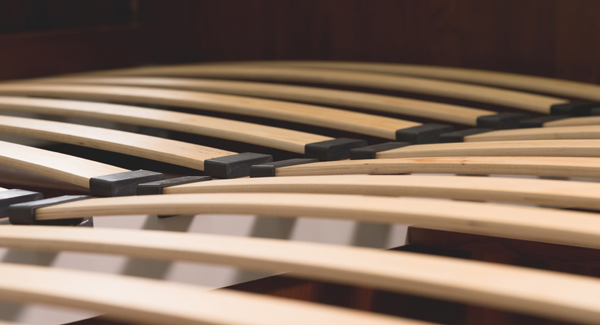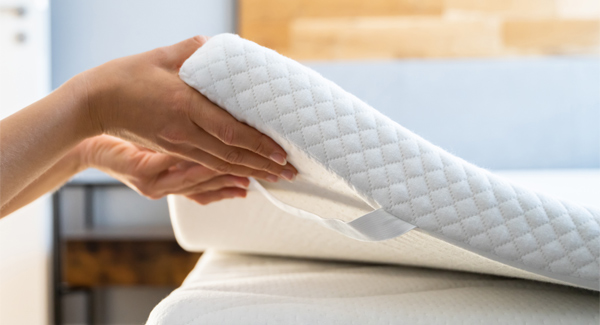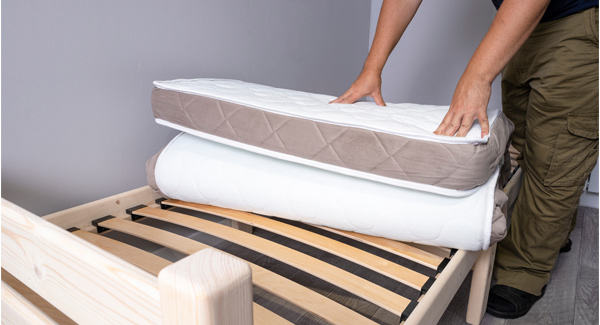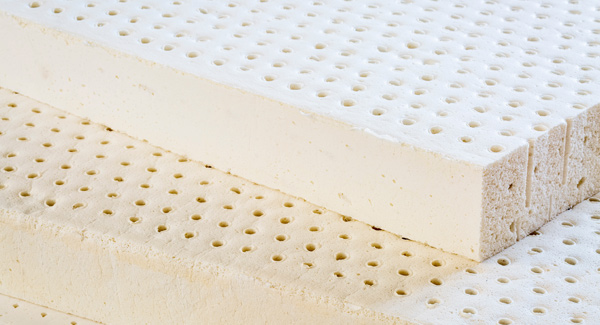Article navigation
- Tony Brown
A mattress is arguably one of the most important purchases you will make. But choosing a suitable bed base for your mattress to rest on is just as important.
A good bed base will help to ensure that the body is correctly supported. It can also help reduce the wear and tear on the mattress and improve the overall comfort.
Choosing a bed base often comes down to personal preference. Some people prefer the functionality of a divan, while others prefer the elegant style of a bed frame.
Most bed frames and some divans have a slatted bed base where the mattress rests on top. These slats will either be solid or sprung. But which are better?

Ensure the mattress and the bed base are compatible with each other
Before considering which slat system is best, it is important to ensure that the bed base is compatible with the mattress. Most manufacturers provide guidance for slat spacing. Generally, the gap between the slats should be no more than 7.5 cm apart.
If the gap between the slats exceeds the manufacturer’s recommendations, this can cause the mattress to sag. This may also damage the mattress and could invalidate the mattress guarantee.
One way to resolve this is to place a sheet of plywood board onto the slats to create an even sleeping surface. You will also need to drill several holes into the board to allow good ventilation.
Also, bear in mind that many mattresses come as a set with a compatible bed base, such as a sprung divan. The bed base is designed to improve the comfort and support of the mattress it is paired with. Although most bed frames and mattresses are compatible with each other, pairing a mattress with a different bed base will alter the way it feels. You may also find the mattress may not perform as well. In some cases, the bed base may not be sturdy enough to support the weight of the mattress. This is often the case when a higher-quality mattress is paired with an inexpensive bed base.
Contact the manufacturer or your local store for further guidance if you’re unsure.
Solid slats
Solid slats are sturdy timber planks that typically extend across the full width of the bed frame. They are often loose and can be screwed to the frame, or come attached to webbing, where they can be rolled out across the length of the bed.
Solid slats provide good support and give the bed a firmer feel. As the slats have no ‘give’ in them, this leaves the mattress to do all the work. This can affect the mattress’s longevity, as there is no cushioning from the base to relieve the strain from the sleeper’s body weight.
When positioning the solid slats on the bed frame, it is important to ensure they are spaced out evenly. Otherwise, the mattress may sag between the gaps.
Sprung slats
Sprung slats are curved planks of laminated wood that are attached to the bed frame with plastic slat holders. They are typically smaller than solid slats and connect to a centre support rail.
They have more flexibility and ‘give’ than solid slats, providing slightly better support and comfort. They also help to reduce some of the wear and tear on the mattress by absorbing some of the strain from the sleeper’s body weight.
Because of their flexibility, sprung slats will slightly soften the feel of the mattress. Some models come with adjustable sliders in the lumbar area to alter the tension (firmness) of the bed.
Sprung slats tend to be smoother than solid slats, so the mattress is less likely to be exposed to splinters or damage from the slats. However, to minimise the risk, it is recommended to place a breathable blanket or mattress pad on top of the slatted base to protect the mattress.
Occasionally, the slats may fall out of their plastic holders, causing the mattress to sag. This may indicate that the bed frame has not been assembled correctly. However, it’s best to regularly check that the slats are intact and have not become misaligned. This will ensure your mattress is correctly supported.
Where two people share a bed, they may feel each other’s movement slightly more on sprung slats than on solid slats. However, this mainly depends on the type of mattress being used. For instance, pocket springs and foam-type mattresses effectively reduce movement across the mattress.
Final thoughts
Both sprung and solid slats offer good support for the mattress. Sprung slats provide extra cushioning, which can improve the overall comfort and help extend the life of the mattress. They make a bed feel slightly softer and provide a slightly ‘springy’ feel. In contrast, solid slats will make a bed feel firmer. They are also more effective at reducing movement, so sleeping partners are less likely to disturb one another in bed.
Regardless of which type of base you choose, you will need to take some precautions to protect the mattress. Firstly, ensure the spacing between the slats does not exceed the manufacturers. Finally, protect the mattress from splinters or slat damage by placing a breathable blanket or mattress pad on top of the slats.

About the author
Tony Brown is the founder and creator of The Bed Consultant. His career in the bed industry began in 2002. After graduating from university with a degree in Business Administration, Tony joined one of the largest independent furniture retailers in the UK as a bed consultant. Tony has helped thousands of customers find the perfect mattress.




